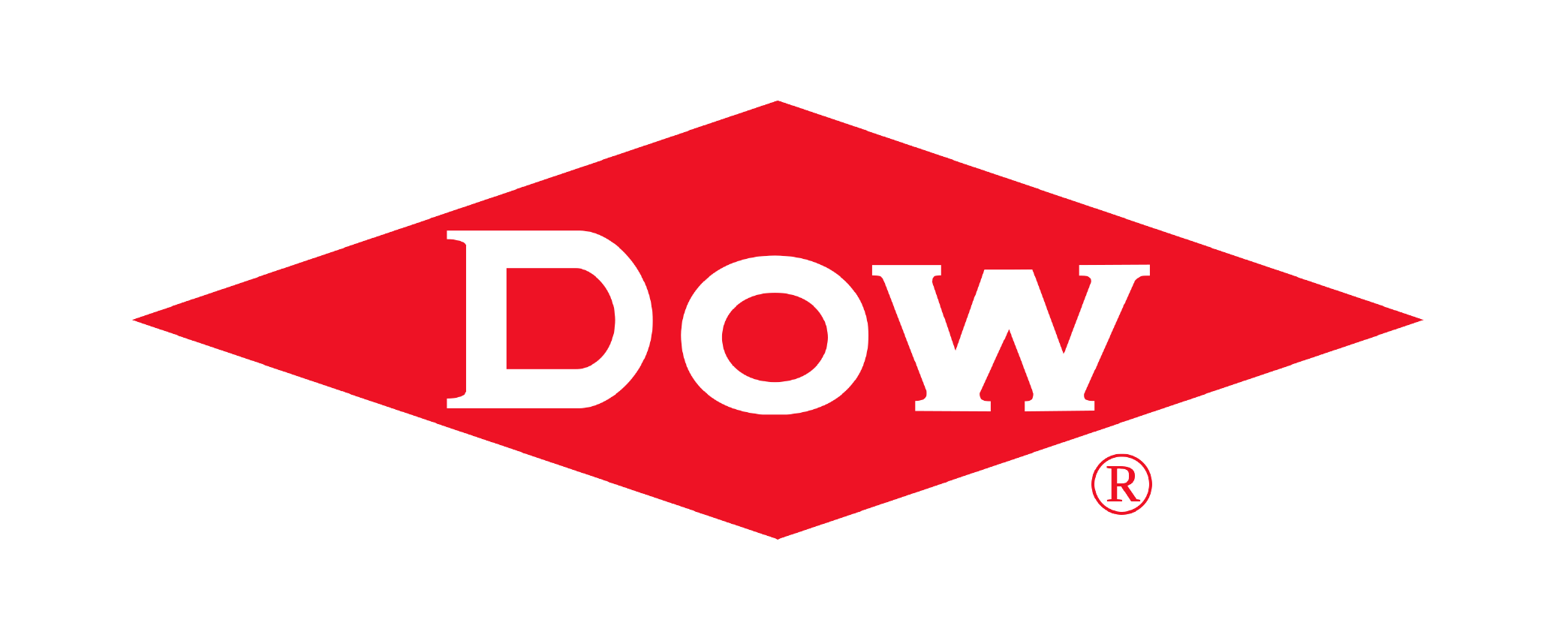The global Sports Car Market is witnessing consistent growth, with its size estimated at USD 90 Billion in 2025 and projected to reach USD 120 Billion by 2033, expanding at a CAGR of 3.5% during the forecast period.
The Sports Car Market Research Report by Future Data Stats presents an in-depth and strategic assessment of the market landscape. Drawing on historical data from 2021 to 2023, the report identifies key trends, evolving growth patterns, and pivotal market dynamics. Anchored in 2024 as the base year, it delivers a detailed examination of consumer behavior, competitive forces, and regulatory frameworks influencing the sector. Extending beyond conventional analysis, the report provides a forward-looking forecast from 2025 to 2033, leveraging advanced analytical methodologies. It maps the anticipated growth trajectory, uncovers emerging opportunities, and highlights potential risks—empowering stakeholders with the actionable intelligence needed to make informed decisions in a rapidly transforming market environment.
MARKET OVERVIEW:
The sports car market exists to fulfill the growing demand for high-performance vehicles that combine speed, design, and advanced engineering. Manufacturers build sports cars to deliver a thrilling driving experience, targeting consumers who seek precision handling, acceleration, and a strong emotional connection with their vehicle. These cars often serve as flagship models, showcasing a brand’s innovation and performance capabilities. Automakers also use the sports car segment to reinforce their brand identity and attract attention in competitive markets. Beyond personal use, sports cars support racing events, promotional campaigns, and luxury rentals. Their presence in the market helps drive technological advancements that eventually filter into mass-market vehicles.
MARKET DYNAMICS:
Automakers increasingly integrate electric powertrains and hybrid systems into sports cars, signaling a major shift toward sustainable performance. Designers focus on lightweight materials, active aerodynamics, and advanced connectivity features to enhance both speed and user experience. Consumers now expect a blend of luxury, performance, and environmental responsibility, pushing manufacturers to innovate rapidly. Limited-edition models and personalized configurations also attract enthusiasts seeking exclusivity. Looking ahead, the sports car market will likely expand through emerging technologies such as AI-assisted driving and customizable digital interfaces. Partnerships between tech companies and car brands are shaping the future of intelligent performance vehicles. Growing demand in Asia and the Middle East is opening new opportunities, while digital retail platforms broaden access to luxury sports models. As interest in experiential ownership rises, subscription-based and short-term leasing models are also gaining momentum.
As technology advances, manufacturers are introducing innovative features that enhance driving experiences, appealing to a younger demographic. The allure of speed and luxury continues to draw consumers, fueling sales growth. Additionally, the rise of electric sports cars presents a fresh opportunity for brands to capture eco-conscious buyers while maintaining performance standards. However, challenges exist in the form of economic fluctuations and shifting consumer preferences. Rising fuel prices and maintenance costs can deter potential buyers, impacting overall market growth. Furthermore, the competitive landscape is intensifying, with established brands facing pressure from new entrants. Despite these restraints, opportunities abound in emerging markets, where a growing middle class seeks premium vehicles. By adapting to these dynamics, companies can strategically position themselves for future success in the evolving sports car sector.
SPORTS CAR MARKET SEGMENTATION ANALYSIS
BY TYPE:
Coupe sports cars continue to dominate the market, driven by their sleek aerodynamics, structural rigidity, and consistent performance on both city roads and highways. Car enthusiasts favor coupes for their aggressive styling, enhanced handling, and lower center of gravity, which delivers superior cornering and control. Many luxury automakers focus on developing high-performance coupes with premium interior materials, cutting-edge infotainment systems, and advanced safety technologies to meet rising consumer expectations. Convertible sports cars attract buyers with their open-air driving experience, which adds an emotional dimension to vehicle ownership. These cars often serve as lifestyle statements, especially in affluent regions with favorable weather. Manufacturers emphasize lightweight design and retractable roof innovations that enhance usability and driving dynamics. The premium positioning of convertibles, combined with limited production models, creates strong demand in the luxury car segment.
Roadsters, known for their two-seater configuration and minimalist approach, appeal to purists who prioritize driving pleasure over practicality. This type remains a niche yet highly loyal category within the sports car landscape. Brands focus on driver-focused engineering, tight handling, and weight distribution to maintain the roadster’s identity. The segment is revitalizing with the introduction of hybrid and electric variants, aimed at reducing emissions while preserving performance. Hatchback sports cars are gaining popularity due to their mix of practicality and power. Compact yet aggressive, these models often feature turbocharged engines and sport-tuned suspensions, attracting younger drivers and urban consumers. Their affordability, combined with everyday usability, makes them highly competitive against sedans and larger performance vehicles. Automakers leverage hatchbacks to reach broader demographics without diluting the sports car essence.
BY APPLICATION:
Personal use remains the leading application segment in the sports car market, propelled by rising disposable incomes, aspirational ownership, and emotional appeal. Consumers often purchase sports cars as secondary or recreational vehicles, placing high value on aesthetics, performance, and brand prestige. Automakers target personal users with customization options, exclusive trims, and driver-assist technologies to enhance engagement and loyalty. Competitive racing continues to shape the sports car industry, serving as a testbed for innovation and a platform for brand identity. Motorsports such as Formula racing, endurance events, and GT competitions push the boundaries of engineering, leading to trickle-down effects in consumer sports car models. Manufacturers with strong motorsport heritage often experience enhanced brand credibility and global visibility, which fuels their mainstream sales.
Commercial rentals form a dynamic segment, particularly in tourist-heavy areas and luxury travel destinations. High-end rental services offer sports cars for short-term use, catering to individuals seeking unique experiences. This segment benefits from seasonal demand spikes and is supported by partnerships with hotel chains, resorts, and influencers. Rental companies often rotate fleets frequently, keeping models fresh and appealing for customers. Promotional or showcase use of sports cars is expanding across brand activations, film production, marketing campaigns, and luxury events. Sports cars serve as visual focal points and brand amplifiers, especially when linked with aspirational values. Businesses leverage these vehicles to evoke excitement, elegance, or cutting-edge innovation. This application has grown with the rise of social media and influencer culture, where visual storytelling drives engagement.
BY ENGINE TYPE:
Internal Combustion Engine (ICE) sports cars remain prevalent, revered for their raw sound, visceral power delivery, and traditional driving experience. High-revving engines, manual transmissions, and mechanical feedback attract enthusiasts who seek an emotional connection with their car. Despite the global push for electrification, ICE models continue to hold symbolic value and perform strongly in regions with lenient emission regulations. Hybrid sports cars are steadily growing in appeal as they combine performance with improved fuel efficiency. Automakers integrate electric motors to boost acceleration, enhance torque, and enable limited electric-only driving. This category aligns well with regulatory compliance while preserving the thrill factor. Premium brands like Ferrari, McLaren, and Porsche lead innovation here, blending luxury with eco-conscious technology.
Fully electric sports cars represent the future frontier of the market. These models capitalize on instant torque, silent acceleration, and cutting-edge battery technology. Tesla’s Roadster and Rimac’s hypercars have redefined expectations around electric performance. As charging infrastructure improves and battery costs fall, more manufacturers are entering this space with concept models and production-ready vehicles. The engine type landscape is increasingly shaped by environmental concerns, with hybrid and electric models rising due to stricter emissions norms. However, ICE vehicles are far from obsolete—they thrive in collector segments and regions without stringent emission caps. Innovation across all engine types will continue to coexist for the foreseeable future, catering to diverse customer preferences.
BY DRIVETRAIN:
Rear-Wheel Drive (RWD) remains a staple in the sports car segment, offering optimal weight distribution and superior handling dynamics. Enthusiasts favor RWD for drifting, track performance, and spirited driving. Automakers continue to refine this layout with limited-slip differentials and traction management systems, ensuring a balance between performance and control. All-Wheel Drive (AWD) systems have surged in popularity, especially in high-performance models that require added traction for high-horsepower engines. AWD sports cars deliver superior grip in varied conditions, appealing to buyers in colder or rain-prone regions. Automakers integrate intelligent torque vectoring and adaptive systems to ensure performance does not compromise agility or driving thrill.
Front-Wheel Drive (FWD) is less common but relevant among entry-level and hatchback sports cars. FWD offers affordability, ease of maintenance, and stable everyday drivability. Manufacturers optimize FWD setups using suspension tuning and lightweight materials, making them agile and responsive. This configuration is favored by younger consumers seeking their first performance car without the high cost of RWD or AWD platforms. The drivetrain choice often reflects the buyer’s driving environment, skill level, and use-case. While purists might gravitate toward RWD for its purity, AWD suits those seeking all-season capability without sacrificing speed. Each configuration has carved its space, and automakers continue to innovate across all formats to meet evolving expectations.
BY FUEL TYPE:
Petrol continues to dominate the sports car market, favored for its high energy density, responsive acceleration, and familiar infrastructure. High-octane petrol engines deliver performance that aligns with the sporty character of these cars. Automakers have perfected turbocharging and direct injection technologies to extract more power while complying with emissions standards. Diesel sports cars have limited appeal but still exist in certain markets where fuel efficiency and torque are prioritized. Diesel engines offer strong mid-range performance and better mileage, making them suitable for long-distance driving. However, tightening emission norms and evolving consumer preferences have reduced their presence in the segment.
Electric sports cars are gaining momentum due to their ability to deliver blistering acceleration, smooth power delivery, and zero emissions. Luxury brands now offer EV sports cars with track-ready performance and futuristic aesthetics. Government incentives, expanding charging infrastructure, and consumer awareness are accelerating this trend, although battery limitations remain a challenge. Hybrid models are bridging the gap between tradition and innovation. Combining the best of petrol and electric drivetrains, they offer thrilling performance with improved efficiency. Brands focus on performance-oriented hybrid systems that enhance torque, reduce lag, and optimize fuel consumption. This segment is set to grow significantly as global policies lean toward green mobility.
BY PRICE RANGE:
Entry-Level Sports Cars attract young professionals and first-time buyers looking to experience performance on a budget. These models often come from mainstream brands offering turbocharged engines, sport suspensions, and sporty aesthetics without luxury frills. The segment thrives on affordability, brand trust, and a taste of motorsport-inspired driving. Mid-Range sports cars strike a balance between performance, comfort, and everyday usability. They attract mature buyers who want track-ready capabilities without compromising on interior quality or ride comfort. Brands load these cars with tech features, premium finishes, and adaptive driving modes to deliver a versatile ownership experience.
High-End sports cars represent a statement of power, luxury, and advanced engineering. These models offer exotic materials, bespoke interiors, and cutting-edge performance technologies. Consumers in this segment expect exclusivity, brand prestige, and seamless customer service. Manufacturers focus on personalization, limited editions, and track pedigree to justify the premium price tag. Ultra-Luxury or Exotic sports cars are aspirational masterpieces, often handcrafted and produced in very limited numbers. These vehicles boast jaw-dropping design, top-tier performance, and price tags exceeding millions. Buyers include collectors, celebrities, and elite clientele seeking status symbols. This segment drives innovation through extreme materials, proprietary technologies, and collaborations with fashion or art houses.
BY DISTRIBUTION CHANNEL:
OEM Dealerships remain the most trusted distribution channel for sports cars. Buyers value official servicing, warranty coverage, and direct brand interaction. Automakers invest heavily in dealership experience, offering test drives, immersive showrooms, and white-glove services to cater to high-end customers. Dealership networks also enable customization and after-sales support. Third-Party Dealers offer flexibility in pricing and inventory, often dealing in both new and pre-owned sports cars. These outlets cater to price-sensitive buyers or those seeking rare models unavailable through official channels. Trusted third-party dealers build reputation through transparency, vehicle history reports, and service partnerships.
Online Sales Platforms are transforming how sports cars are marketed and sold. Digital configurators, virtual showrooms, and direct-to-home delivery services are gaining traction, especially among tech-savvy and younger buyers. Online platforms reduce the intimidation factor of showrooms and allow cross-brand comparison with ease. As e-commerce confidence grows, more consumers are willing to purchase high-value cars online. Each distribution channel serves a unique buyer profile. While traditional dealerships retain dominance in premium segments, third-party dealers and online platforms are shaking up the market with convenience, reach, and innovative buying models. Automakers now strive to maintain a presence across all touchpoints to stay competitive.
REGIONAL ANALYSIS:
Manufacturers in North America continue to invest heavily in performance innovation, with the U.S. leading in both production and consumer demand for sports cars. Europe maintains a strong position through legacy brands known for engineering precision and racing heritage. Germany, Italy, and the U.K. drive exports and push advancements in hybrid sports vehicles. These regions show steady growth, driven by loyal consumer bases and strong aftermarket support.
In Asia Pacific, rising disposable income and increasing interest in luxury vehicles fuel market expansion, especially in China and Japan. Latin America shows gradual growth, led by urban consumers seeking premium performance experiences. Meanwhile, the Middle East and Africa regions witness growing interest, especially in Gulf countries where high-performance cars symbolize status. Each region contributes uniquely, shaped by cultural preferences, income levels, and infrastructure development.
MERGERS & ACQUISITIONS:
- In Jan 2024: Porsche announced a new electric sports car prototype.
- In Feb 2024: Ferrari acquired a minority stake in a luxury EV battery startup.
- In Mar 2024: Lamborghini unveiled its hybrid hypercar, the Revuelto.
- In Apr 2024: Tesla partnered with Lotus for next-gen electric sports car tech.
- In May 2024: BMW merged its M Division with McLaren for joint performance projects.
- In Jun 2024: Aston Martin secured funding for its next-gen Valkyrie successor.
- In Jul 2024: Toyota Gazoo Racing expanded its GR sports car lineup globally.
- In Aug 2024: Ford Performance acquired a boutique sports car manufacturer.
- In Sep 2024: Audi Sport launched its RS e-tron GT performance variant.
- In Oct 2024: Hyundai N Division entered a tech-sharing deal with Porsche.
- In Nov 2024: Chevrolet Corvette ZR1 debuted with hybrid powertrain.
- In Dec 2024: Mercedes-AMG finalized its takeover of a high-performance EV startup.
KEYMARKET PLAYERS:
- Porsche
- Ferrari
- Lamborghini
- McLaren
- Aston Martin
- Chevrolet (Corvette)
- Ford (Mustang, GT)
- Mercedes-AMG
- BMW M
- Audi Sport
- Lexus (F Performance)
- Nissan (NISMO, GT-R)
- Toyota (GR Supra, Gazoo Racing)
- Honda (Acura NSX)
- Hyundai N
- Kia (Stinger GT, performance division)
- Alfa Romeo (Quadrifoglio)
- Maserati
- Bugatti
- Lotus
Sports Car Market: Table of Contents
Executive Summary
- Key Market Highlights
- Opportunity Mapping
- Analyst Viewpoint
Market Introduction
- Overview and Scope
- Definitions and Classifications
- Research Methodology
- Assumptions and Limitations
Market Dynamics
- Market Drivers
- Market Restraints
- Opportunities and Innovations
- Key Trends and Developments
- Value Chain and Ecosystem Analysis
- Porter’s Five Forces Framework
- Regulatory and Environmental Impact
Market Segmentation Analysis
- By Type
- By Application
- By Engine Type
- By Drivetrain
- By Fuel Type
- By Price Range
- By Distribution Channel
Regional Analysis
- North America
- Europe
- Asia Pacific
- Latin America
- Middle East & Africa
Competitive Landscape
- Market Share Analysis
- Key Player Benchmarking
- Strategic Initiatives (M&A, Collaborations, Launches)
- Company Profiles
- Overview
- Financials
- Key Offerings
- Strategic Focus Areas
Market Outlook and Forecast
- Demand Forecast by Segment
- Revenue Projections by Region
- Emerging Technologies and Future Impact
Appendix
- Abbreviations
- Glossary of Terms
- Research Methodology
- Data Sources
List of Figures
- Regional Market Share Pie Chart
- Sports Car Type Comparison – Global Volume
- Fuel Type Trends Over Time
- Engine Type Share (Bar Graph)
- Growth Forecast Curve by Region
- Competitive Positioning Matrix
- Price Range vs Sales (Bubble Chart)
List of Tables
- Market Revenue by Type (USD Million)
- Engine Type Comparison – Global and Regional
- Application-Wise Demand Split
- Drivetrain Market Share by Region
- OEM vs Online Sales Breakdown
- Country-Wise Volume Analysis
- Key Player Revenue and Launch Timeline
Sports Car Market Segmentation
By Type:
- Coupe
- Convertible
- Roadster
- Hatchback Sports Car
By Application:
- Personal Use
- Competitive Racing
- Commercial Rentals
- Promotional/Showcase Use
By Engine Type:
- Internal Combustion Engine (ICE)
- Hybrid
- Fully Electric
By Drivetrain:
- Rear-Wheel Drive (RWD)
- All-Wheel Drive (AWD)
- Front-Wheel Drive (FWD)
By Fuel Type:
- Petrol
- Diesel
- Electric
- Hybrid
By Price Range:
- Entry-Level Sports Cars
- Mid-Range
- High-End
- Ultra-Luxury/Exotic
By Distribution Channel:
- OEM Dealerships
- Third-Party Dealers
- Online Sales Platforms
By Geography:
- North America (USA, Canada, Mexico)
- Europe (UK, Germany, France, Italy, Spain, Rest of Europe)
- Asia-Pacific (China, Japan, Australia, South Korea, India, Rest of Asia-Pacific)
- South America (Brazil, Argentina, Rest of South America)
- Middle East and Africa (GCC Countries, South Africa, Rest of MEA)
Future Data Stats offers reports that combine accuracy, speed, and flexibility. Our report pricing is competitive, reflecting the high quality of research and insights we deliver. Clients benefit from expert analyst support, ensuring any questions or clarifications are handled promptly. We pride ourselves on fast responses and timely delivery, so you can make decisions without delays. Customization is free, allowing reports to be tailored to your specific needs. Every report is thoroughly researched and verified, maintaining top-notch quality standards. With Future Data Stats, you receive insightful, reliable, and actionable market intelligence designed to support your business growth.
Why Invest in a Market Research Report?
In today's competitive landscape, intuition is not enough. Success is driven by strategy, and strategy is built on data. A market research report is more than an expense—it's a critical investment in your company's future. Here’s how it empowers your business:
- Make Informed Decisions with Confidence
Move beyond guesswork. Our reports transform raw data into actionable insights, enabling you to base critical decisions—from product launches to market expansion—on real-world trends, validated customer behaviors, and clear competitive benchmarks. This foundation of knowledge significantly increases your odds of success. - Discover Untapped Opportunities
Uncover hidden potential. A comprehensive report reveals market gaps, unmet customer needs, and emerging trends long before they become mainstream. This intelligence allows you to act early, seize opportunities, and establish a powerful first-mover advantage. - Gain a Strategic Competitive Edge
Understand your competitors’ strengths, weaknesses, and strategies in detail. With this intelligence, you can refine your value proposition, differentiate your brand, and develop strategies to effectively outmaneuver competition in your space. - Craft Targeted, High-ROI Marketing Campaigns
Reach the right audience with the right message. Our research provides deep demographic, psychographic, and behavioral analysis of your target customers. This clarity allows you to design highly targeted marketing campaigns that resonate deeply and deliver a superior return on investment. - Mitigate Risk and Navigate Uncertainty
Anticipate challenges before they arise. A quality report highlights potential roadblocks, economic shifts, and industry disruptions. By identifying these risks early, you can develop proactive strategies to avoid costly setbacks and protect your business. - Secure Funding and Build Credibility
Strengthen your case for investment. Whether pitching to investors or applying for a loan, a credible market research report demonstrates due diligence and a thorough understanding of the market. This builds immediate trust and dramatically increases your chances of securing the support you need. - Future-Proof Your Business
Markets evolve rapidly. Continuous access to updated research ensures you stay ahead of changes in consumer preferences, technological advancements, and regulatory landscapes. This allows your business to adapt quickly, maintain relevance, and ensure long-term agility.
Invest in Clarity. Invest in Strategy. Invest in Success.
Research Methodology: The Future Data Stats Advantage
At Future Data Stats, we transform raw data into strategic advantage. Our methodology is a powerful fusion of deep industry expertise and cutting-edge analytical techniques, designed to deliver credible, actionable intelligence that drives confident decision-making in a dynamic global market.
A 360° View for a Complete Picture
We move beyond superficial metrics to provide a holistic understanding of market dynamics. Our comprehensive evaluation is engineered to:
- Precisely quantifythe current market size and model reliable growth forecasts.
- Map the competitive landscapeto identify saturation, positioning, and untapped opportunities.
- Uncover emerging trendsthrough advanced analytics and predictive modeling.
- Cross-validate every findingvia data triangulation and direct consultation with industry experts.
This multi-faceted approach ensures you receive not just data, but future-ready intelligence.
The Integrity of Our Data: Rigorous and Multi-Sourced
Credibility is built on a foundation of robust data collection and validation. Our insights are powered by a diverse array of sources:
- Primary Intelligence:Direct interviews with C-suite executives, key suppliers, investors, and industry influencers.
- Secondary Expertise:Scrutiny of over 3,000 sources, including global databases, trade journals, white papers, and government publications.
- Localized Context:Granular insights into region-specific demand, regulations, and economic drivers.
- Customized Modeling:Tailored analytical frameworks built around the unique nuances of your sector.
Every data point undergoes a stringent verification process to ensure accuracy, minimize bias, and guarantee consistency.
Our Dual-Layer Research Model
- Primary Research: The Voice of the Market
We engage directly with the industry to capture ground-level truth.
- 25+ hours of targeted stakeholder interviews per project.
- Custom-designed surveys for Key Opinion Leaders (KOLs) to extract qualitative depth.
- Direct comparative analysis to decode competitive dynamics.
- Secondary Research: The Power of Exhaustive Analysis
We leave no stone unturned in our desk research.
- Systematic review of thousands of academic, financial, and regulatory sources.
- Aggregation of macroeconomic and sector-specific data from recognized global portals.
- Historical pattern analysis to contextualize and predict long-term shifts.
Precision Through Balanced Analysis: Top-Down & Bottom-Up
We enhance forecasting accuracy by integrating two distinct analytical perspectives:
- The Bottom-Up Approach:Building a detailed market view by aggregating granular, micro-level data.
- The Top-Down Approach:Validating findings against overarching industry trends and macro-economic indicators.
This dual methodology creates a balanced, reliable framework for market sizing and forecasting.
Why Partner with Future Data Stats?
- Collective Mastery:Leverage over 70 years of combined analyst experience.
- Bespoke Solutions:Research design tailored to your specific strategic objectives and industry challenges.
- Transparent Partnership:Clear methodologies and processes that prioritize reliability and actionable value.
- Unbiased Clarity:Independent, neutral analysis dedicated to your success.
With Future Data Stats, you invest in more than information—you invest in clarity, direction, and market leadership.
Let's connect and explore how our methodology can power your next strategic decision.
Sports Car Market Dynamic Factors
Drivers:
- Consumers seek high-performance vehicles that reflect status, speed, and style.
- Automakers consistently invest in lightweight materials and advanced drivetrains.
- Rising disposable incomes in emerging markets boost sports car sales momentum.
Restraints:
- High purchase and maintenance costs limit affordability for mass consumers.
- Fuel efficiency concerns and emissions regulations tighten regional demand.
- Harsh insurance policies and taxation on luxury vehicles restrict buyer interest.
Opportunities:
- Electric sports cars attract eco-conscious buyers with performance and innovation.
- Customization options and limited editions spark demand among niche enthusiasts.
- Growing motorsport culture in Asia and Latin America opens untapped markets.
Challenges:
- Regulatory shifts toward zero-emission mandates pressure combustion-based models.
- Supply chain issues disrupt the timely launch of new models and components.
- Economic downturns reduce consumer willingness to invest in luxury automobiles.
Sports Car Market Regional Key Trends Analysis
North America:
- Demand grows for muscle-style and hybrid performance cars.
- Buyers lean toward technologically advanced interiors and infotainment systems.
- High interest in track-ready street cars fuels aftermarket tuning services.
Europe:
- Strong EV push reshapes luxury sports car engineering strategies.
- Strict carbon emission norms drive innovation in lightweight body designs.
- Historic automotive brands gain momentum through heritage-inspired models.
Asia-Pacific:
- Youth-driven luxury aspirations increase demand for entry-level sports cars.
- Local manufacturing partnerships accelerate brand penetration in developing economies.
- Japanese and Korean brands expand export-focused performance lineups.
Middle East & Africa:
- Rising ultra-high-net-worth population drives premium segment growth.
- Favorable fuel prices and relaxed regulations support high-engine-capacity sales.
- Supercar tourism experiences create cross-border brand exposure.
Latin America:
- Urban elites show growing interest in luxury mobility and sport aesthetics.
- Limited availability boosts value of imported and rare models.
- Motorsport sponsorships enhance brand visibility across local fan bases.
Frequently Asked Questions















